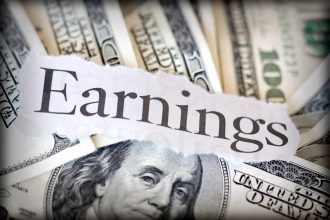Oil futures fell Friday and posting a weekly decline after a flurry of central bank interest rate increases around the world this week heightened fears of a sharp economic slowdown.
Price action
-
West Texas Intermediate crude for August delivery
CL00,
+0.53% CL.1,
+0.53% CLQ23,
+0.53%
fell 35 cents, or 0.5%, to close at $$69.16 a barrel on the New York Mercantile Exchange, leaving the U.S. benchmark down 3.9% for the week. -
August Brent crude
BRNQ23,
+0.42% ,
the global benchmark, settled at $73.85 a barrel, down 29 cents, or 0.4%, on ICE Futures Europe. It fell 3.6% for the week. -
Back on Nymex, July gasoline
RBN23,
+0.56%
dropped 1.3% to $2.517 a gallon, while July heating oil
HON23,
+1.08%
dropped 2.4% to $2.407 a gallon. Gasoline saw a 6.1% weekly tumble, while heating oil declined 5.7%. -
July natural gas
NGN23,
-0.21%
rose 4.6% to end at $2.729 per million British thermal units, leaving it up 3.7% for the week.
Market drivers
WTI futures have dropped below $70 a barrel four times this year with increasing frequency, but each time technical support between $67 and $69 a barrel has held, noted analysts at Sevens Report Research, in a Friday note. Each subsequent bounce in prices has run out of steam at a lower price point.
“This heavy price action with repetitive tests of the same support and continuously weaker recoveries suggests the oil market is approaching a tipping point; poised to either break down to new 2023 lows or finally move beyond the $72-$73 area, triggering a squeeze as sentiment and positioning in the energy markets is very bearish,” they wrote.
Oil-field services firm Baker Hughes on Friday reported that the number of U.S. oil rigs fell by 6 last week to 546.
Crude prices dropped sharply Thursday after the Bank of England and Norway’s central bank each raised interest rates by half a percentage point, while the Swiss National Bank delivered a quarter percentage point increase. Federal Reserve Chair Jerome Powell, in a second day of congressional testimony, reiterated expectations by policy makers for two more rate increases after the central bank left rates unchanged last week.
See: Global growth outlook deteriorates on central bank rate hikes, raising risks for U.S. and markets
The focus on central banks outweighed what analysts described as a largely supportive weekly fall of 3.8 million barrels in U.S. crude inventories reported by the Energy Information Administration.
The U.S. dollar was rallying versus major rivals, with the ICE U.S. Dollar Index
DXY,
a measure of the currency against a basket of six others, was up 0.6% on Friday. A stronger dollar can put pressure on commodities priced in the unit, making them more expensive to users of other currencies.
Read the full article here



